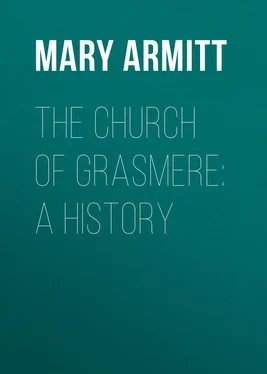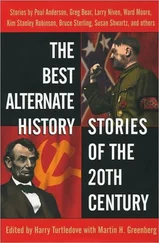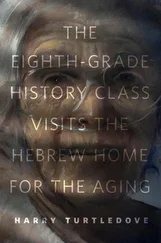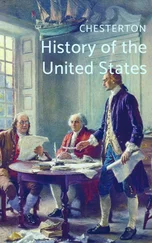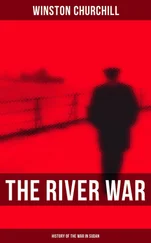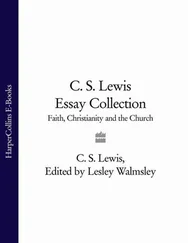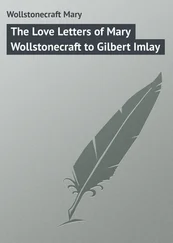Mary Armitt - The Church of Grasmere - A History
Здесь есть возможность читать онлайн «Mary Armitt - The Church of Grasmere - A History» — ознакомительный отрывок электронной книги совершенно бесплатно, а после прочтения отрывка купить полную версию. В некоторых случаях можно слушать аудио, скачать через торрент в формате fb2 и присутствует краткое содержание. ISBN: , Жанр: foreign_antique, foreign_prose, на английском языке. Описание произведения, (предисловие) а так же отзывы посетителей доступны на портале библиотеки ЛибКат.
- Название:The Church of Grasmere: A History
- Автор:
- Жанр:
- Год:неизвестен
- ISBN:http://www.gutenberg.org/ebooks/43002
- Рейтинг книги:4 / 5. Голосов: 1
-
Избранное:Добавить в избранное
- Отзывы:
-
Ваша оценка:
- 80
- 1
- 2
- 3
- 4
- 5
The Church of Grasmere: A History: краткое содержание, описание и аннотация
Предлагаем к чтению аннотацию, описание, краткое содержание или предисловие (зависит от того, что написал сам автор книги «The Church of Grasmere: A History»). Если вы не нашли необходимую информацию о книге — напишите в комментариях, мы постараемся отыскать её.
The Church of Grasmere: A History — читать онлайн ознакомительный отрывок
Ниже представлен текст книги, разбитый по страницам. Система сохранения места последней прочитанной страницы, позволяет с удобством читать онлайн бесплатно книгу «The Church of Grasmere: A History», без необходимости каждый раз заново искать на чём Вы остановились. Поставьте закладку, и сможете в любой момент перейти на страницу, на которой закончили чтение.
Интервал:
Закладка:
Now Grasmere may at first have ranked in the third order, as a mission church ( capella ). It would in that case pay its tithes, or a large proportion of them, to Kirkby Kendal, and bury its christian dead within the consecrated soil of that church. It may not have acquired the right of burial until the lord created a demesne there. 32 32 The early practice of burial in distant churches is inexplicable to this age. But it should be remembered that in early days man was a peripatetic animal, to whom the distance between Grasmere and Kendal, or Hawkshead and Dalton, would be slight; and that a corpse wrapped in a winding-sheet would be much lighter than one coffined.
This view is strengthened by the fact that the church of Kendale claimed certain dues from Grasmere and Windermere down to a late date. One was a pension of 13s. 4d. (one mark) paid to the vicar out of the tithes of the parish. The other was a mortuary fee, exacted by him as late as the seventeenth century. 33 33 Of the first, still paid, there is plenty of evidence. It was even allowed during the Commonwealth. In 1645 the Rydal Hall account-sheets show that arrears were paid to the Kendal parson out of the tithes "upon order for 5 yeares stypd out of Gresmire," amounting to £3 6s 8d or five marks. Next year is entered "Rent due to mr. M. out of Gresmire tithes" 13s 6d. The order came from the Puritan Committee at Kendal.
BOUNDARIES
The boundary of the parish of Grasmere followed geographical lines. Starting from the point where the Rothay and the Brathay unite for their entrance into Windermere, it ascended the first river for a short distance until it reached the tributary, Stock beck. This it ascended until, near the source, it struck upwards to the line of the watershed. It then followed a devious course along the mountain tops, as "heven watter deales" (divides), according to the quaint old boundary phrase. Always clinging to the sky line between waters flowing north and south, it dropped to Dunmail Raise, to rise to the tops again. From these lonely heights it made another short artificial course to reach Little Langdale beck near the source, and with these waters – named Brathay after emerging from Elterwater – it continued to the uniting place of the two rivers at Bird-house Mouth. Thus, with the exception of the right bank of the Brathay, the parish embraced the whole area of the two valleys of the Rothay and Brathay and their confluents. Its boundary marched with that of parishes in Westmorland, Cumberland and Lancashire. Its northern line was for centuries the boundary between the Anglian rule, and the Celtic kingdom of Cumbria. Its circuit counted some thirty-five miles by flat measurement; but much of it lay on summits that reach to a great height.
THE TOWNSHIPS
This parish – a wild tract of fells, becks, and tarns, was divided into three component parts.
It has been pointed out 34 34 Creighton's Historical Essays .
that the ancient church of Northumbria left certain marks upon the districts she administered which may yet be distinguished. One peculiarity was the great extent of the parishes, some of which embraced several – occasionally many – townships. Another was, that each parish was governed secularly by a body of men known as the Twenty-four. Now Grasmere conformed nearly, though not exactly, with these rules; for the controlling body consisted of Eighteen, not Twenty-four, being in this respect like the Cumbrian parish of Crosthwaite to the north. But other parishes of the district had their Twenty-four – as Cartmel and Dalton in Furness. 35 35 At Cartmel in 1642 measures were taken "for the makinge upp of the twentie-fourte … that there may be four in everye churchwardens division as hath formerlie been used." Stockdale's Annales Caermoelensis .
In the next parish of Windermere, the Twenty-four are still an active body, and collect at the church every Easter Tuesday, eight coming from each of the three townships, Under-Milbeck, Applethwaite and Troutbeck.
The parish of Grasmere also embraced three townships. One was Grasmere proper, situated in the basin-shaped vale that catches the sources of the Rothay, Langdale; the sister valley formed the second township, which extended to Elterwater; the third was Rydal-and-Loughrigg (often called Loughrigg and Beneath-Moss) which included all the rocky mass between the converging rivers, the compact village of Rydal with part of Ambleside.
From three sides of the parish then, by mountain path and "horse-trod," the folk wended their way for worship to Grasmere Church. Those of the vale of Grasmere proper would gather in units or little groups from all the scattered farmsteads, from Far Easdale and Blindtarn Gill, from Town Head, Gill Side, and all the houses that lay "Aboon Beck" as far as How Head and Town End, till they met at their lych-gate on the north side of the church.
From Loughrigg and Beneath-Moss they would collect by many a devious track, starting as far back as Clappersgate and Ambleside. From Ambleside ancient "trods" passed Nook End, and rose from Scandale Bridge by easy grade to Nab Lane (where Rydal folk would join them) and White Moss, and thence descending to cross the church bridge to enter the garth by the present gate, which was specially their own.
The third stream of worshippers flowed from the farthest sources west, from the recesses of Little Langdale, from Blea Tarn, and Fell Foot, from Forge and Hackett and Colwith they came, on through Elterwater, and across Walthwaite Bottom. Mounting the brow, they would meet a tributary stream of fellow-townsfolk, that gathered right from Steel End and Wall End, increasing as it flowed down Mickle Langdale, till it crossed the ridge of Hunting Stile. Dropping steeply into the vale, they would at Nichols (where stood an inn) meet a third contingent (from Loughrigg) which, starting at Skelwith, mounted by Foul Step to Little Loughrigg, passed by the Fold, the Oaks and Scroggs, to descend by Red Bank to the level of Grasmere Lake. 36 36 There is a tradition that a route from Skelwith Bridge dropped sharply from the top of Red Bank to the old ford of the Rothay known as Bathwath (Rydal Hall MSS.), and that it had even been used for funerals. This seems unlikely, unless the use were a repetition of a custom that had prevailed before the present Red Bank road was made; and of superstitious adherence to old corpse-roads the Rev. J. C. Atkinson ( Forty Years in a Moorland Parish ) gives instances. There may indeed have been once a well-trodden path there. In former times a fulling-mill stood on the left bank of the Rothay, near to the ford, and within the freehold property of Bainrigg. The mill was owned by the Benson family in the fifteenth century, but Bainrigg had belonged before that time to a family of de Bainbrigg, who had at least one capital dwelling or mansion-house standing upon it. Now a road to this house or houses there must have been. The woodman recently found a track leading up from the site of the mill to the rocky height, which emerged upon the present Wishing-Gate road. On the line of this (which was engineered as a turnpike road only about 1770-80) the older way doubtless continued towards Grasmere, past How Top and through Town End. A huge stone standing on this line was known as the How Stone. Levi Hodgson who lived at How Top, and who described the route to Mr. W. H. Hills, remembered fragments of a cottage in the wood. If the Skelwith Bridge folk ever used it as a church path, they would meet their townsmen (who had come over White Moss) at How Top. Close by there is still a flat-topped boulder used for resting burdens upon.
From Nichols onward the united groups would travel by the lake, and past the Holy Well, to enter the church garth by a gate at the north-west angle, now gone, called the Langdale gate. 37 37 This gate is shown in a map of 1846, as well as the stile which gave its name to the house then still standing, that was immediately opposite. Both disappeared at the widening of the lane from Stock Bridge to the church.
Here, at Church Stile, stood an important inn, long owned by the Harrison family. Shelter and a fire must indeed have been often needed (as well as something for the inner man) after the long travel – especially at funeral gatherings, when the corpse had to be borne through ford and flood, or through the storms and deep snows of winter time. The Ambleside folk, when in 1674 they petitioned their bishop for the right of burial in their chapel, stated that "by reason of the heat in summer and the great snowes and sudden inundations of water in winter it is very difficult and dangerous to carry their dead thither [to Grasmere] for burial"; 38 38 Ambleside Town and Chapel.
yet their distance from the church was nothing like that of the Langdale folk. There were not infrequent burials from the right bank of Little Langdale beck, in the parish of Hawkshead or of "Ulverston."
Интервал:
Закладка:
Похожие книги на «The Church of Grasmere: A History»
Представляем Вашему вниманию похожие книги на «The Church of Grasmere: A History» списком для выбора. Мы отобрали схожую по названию и смыслу литературу в надежде предоставить читателям больше вариантов отыскать новые, интересные, ещё непрочитанные произведения.
Обсуждение, отзывы о книге «The Church of Grasmere: A History» и просто собственные мнения читателей. Оставьте ваши комментарии, напишите, что Вы думаете о произведении, его смысле или главных героях. Укажите что конкретно понравилось, а что нет, и почему Вы так считаете.
